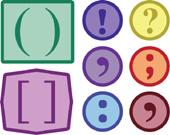 When extra emphasis or a degree of formality is desired, a colon can be used to introduce a word, a phrase, or a clause.
When extra emphasis or a degree of formality is desired, a colon can be used to introduce a word, a phrase, or a clause.
|
There is one thing he wanted: the manager’s job. One factor cannot be ignored: the bottom line.
|
A colon is frequently used after an introductory statement that clearly indicates that something – a list or an enumeration, for example – is to follow.
| The case contains the following materials: cotton, wool, nylon and silk. |
And:
There were a number of unexpected problems:
|
And:
| Look for the following features in a new car: a large motor, an automatic transmission, and an electric clock. |
And:
|
The general manager called the meeting for two reasons:
|
A colon can also be used to indicate that the writer wants to illustrate something or explain in more detail.
| The countries are quite different: China has a controlled economy while Japan has a free market economy. |




